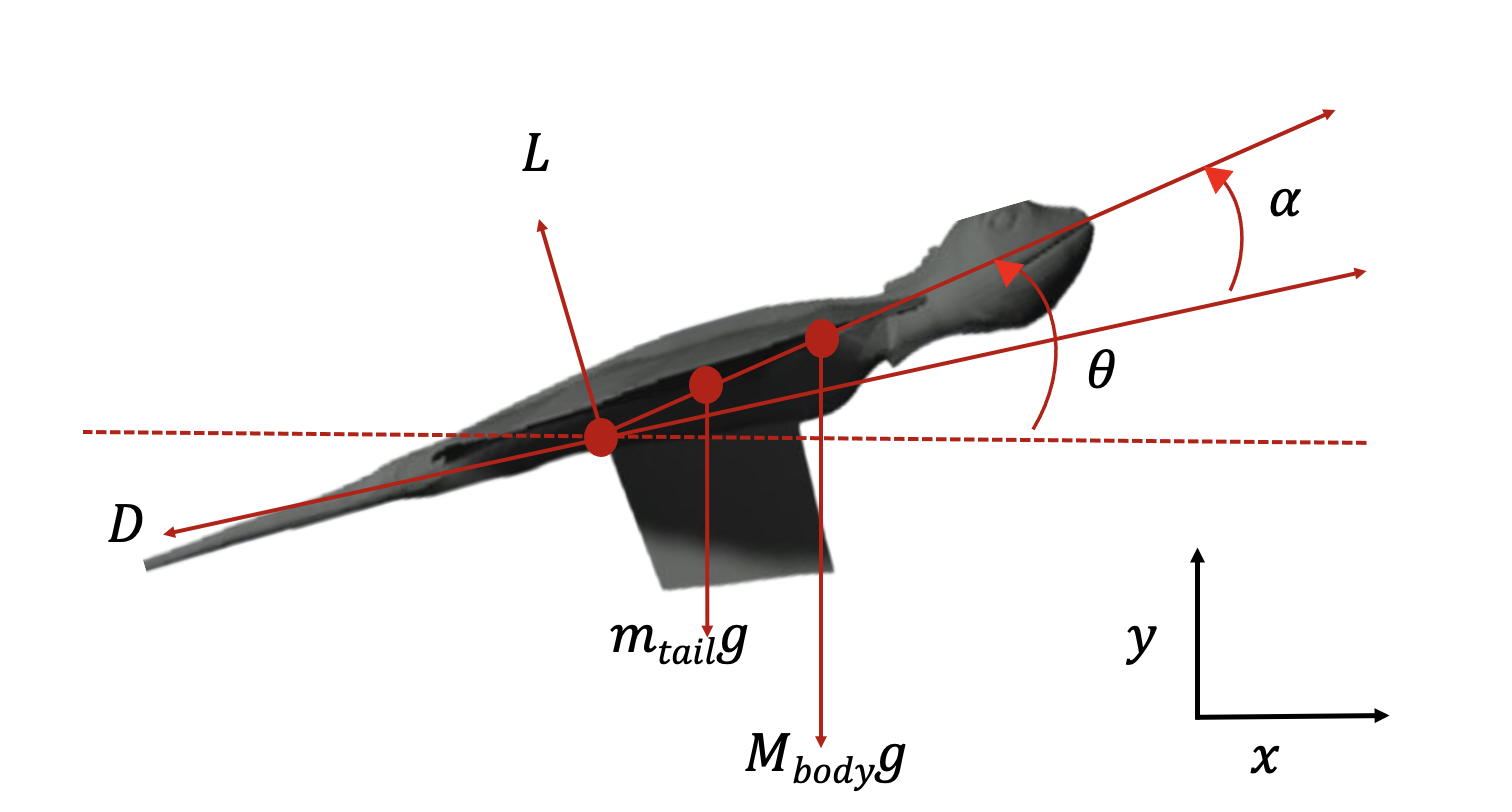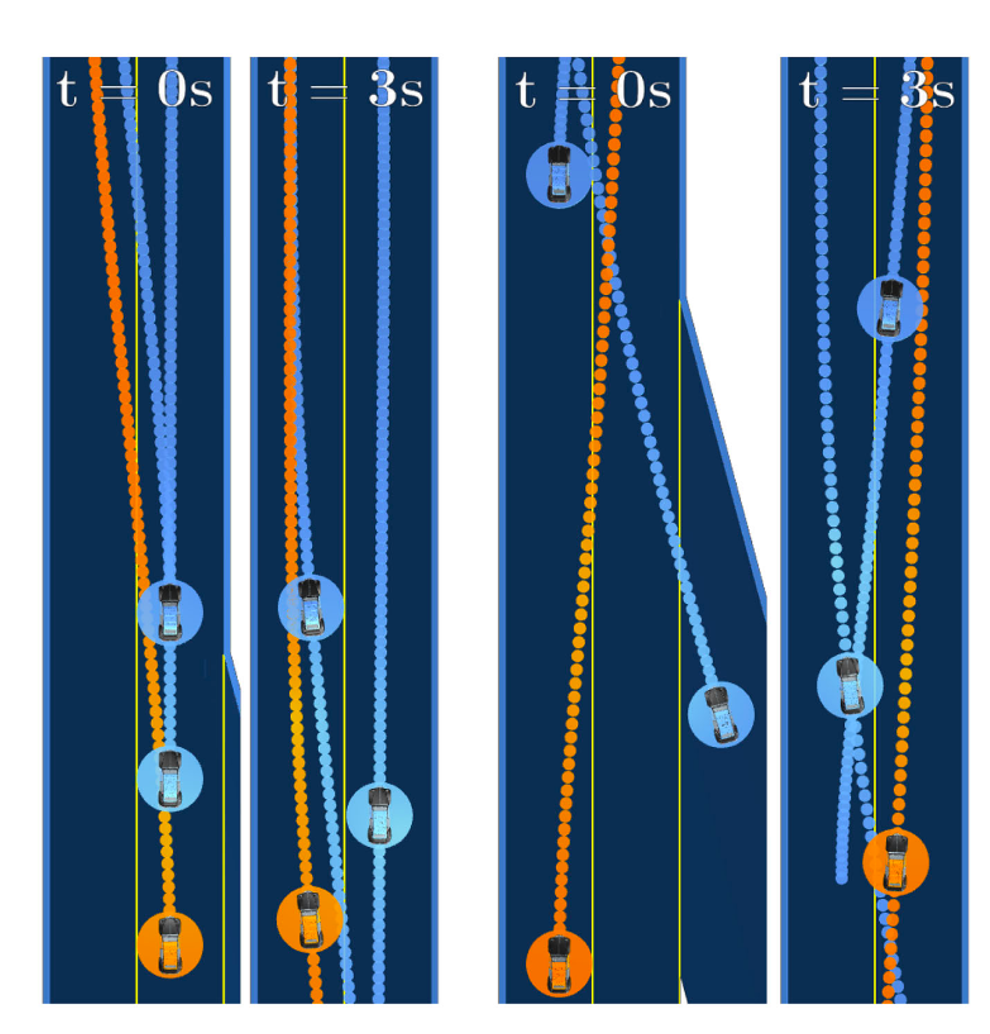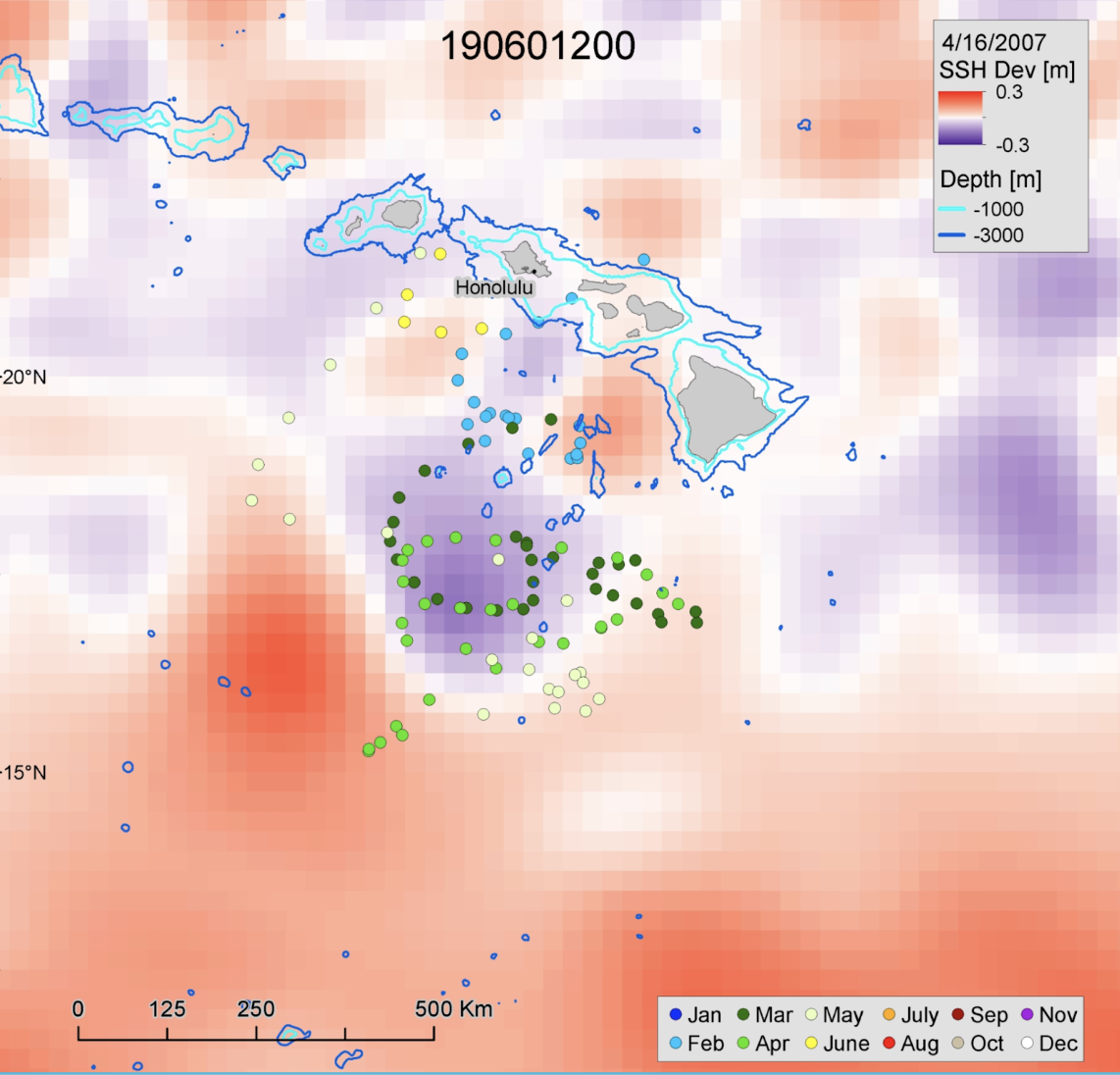The ability to glide through an arboreal habitat has been acquired by several mammals, amphibians, snakes, lizards, and even invertebrates. Lizards of the genus Draco possess specialized morphological structures for gliding, including a patagium, throat lappets, and modified hindlimbs. Despite being among the most specialized reptilian gliders, it is currently unknown how Draco is able to maneuver effectively during flight. Here, we present a new computational method for characterizing the role of tail control on Draco glide distance and stability. We first modeled Draco flight dynamics as a function of gravitational, lift, and drag forces. Lift and drag estimates were derived from wind tunnel experiments of 3D printed models based on photos of Draco during gliding. Initial modeling leveraged the known mass and planar surface area of the Draco to estimate lift and drag coefficients. We developed a simplified, 3D simulation for Draco gliding, calculating longitudinal and lateral position and a pitch angle of the lizard with respect to a cartesian coordinate frame. We used PID control to model the lizards’ tail adjustment to maintain an angle of attack. Our model suggests an active tail improves both glide distance and stability in Draco. These results provide insight toward the biomechanics of Draco; however, future in vivo studies are needed to provide a complete picture for gliding mechanics of this genus. Our approach enables the replication and modification of existing gliders to better understand their performance and mechanics. This can be applied to extinct species, but also as a way of exploring the biomimetic potential of different morphological features. See the paper.

 I work for the nonprofit Hands-On Robotics, and we are collaborating with the Stanford Children’s Hospital to explore how quadrupeds can improve peri-operative and inpatient pediatric experience. Our work has been featured in the Stanford Report, ABC News, and more.
I work for the nonprofit Hands-On Robotics, and we are collaborating with the Stanford Children’s Hospital to explore how quadrupeds can improve peri-operative and inpatient pediatric experience. Our work has been featured in the Stanford Report, ABC News, and more.




